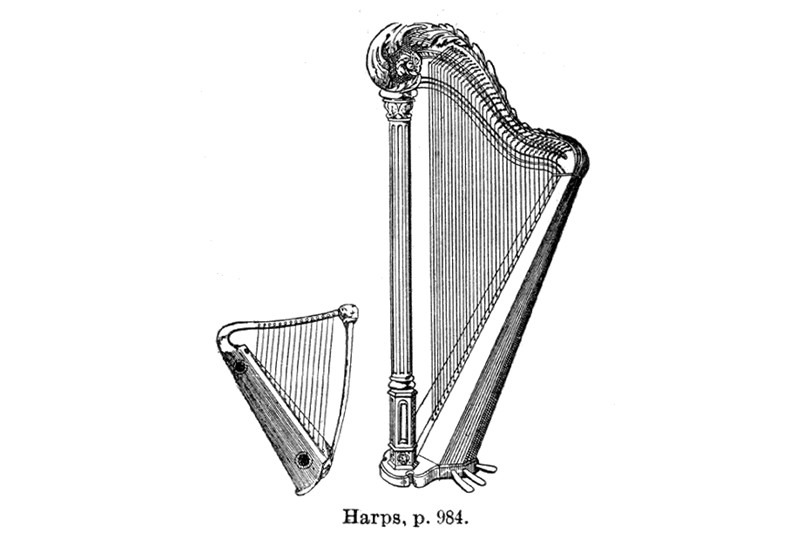The harp is one of the stringed instruments that have a couple of individual strings running vertically at an angle to its soundboard. The term harp comes from an Old English word hearpe, which is closer to the Old High German word harpha. Around the world, harps vary in several sizes. Some can be small and can be played on the lap, but there are also large harps that are quite heavy and usually rest on the floor. But despite its sizes, all harps have resonators, neck, and strings. However, frame harps or the so-called triangular harps have a pillar at the long end to support the strings.
The harp is a plucked instrument that has a long history and was not used in orchestral music until the 19th century. Harps are made of wood and are essentially triangular in shape. Usually, harps have about forty-seven strings whose pitches were tuned by seven foot pedals. The strings are made out of the metal gut, but sometimes it is made of nylon. Some player prefers to put colors on their strings as a visual guide on plucking the right string. Usually, they color all the Cs red, while the Fs are all black. As well as that, these strings also need to be tuned before performances.
On the other hand, the foot pedals allow the harp to play chromatic notes. However, this also means that music composers for harp instruments need to be wary of sufficient time for a pedal change. The range of this instrument is from C1 to G7. These fall from the low register, central register, and the high register.
When the pedals are raised and the strings are in the flat position, the pitches of the harp are Cb, Db, Eb, Fb, Gb, Ab, and Bb. Meanwhile, when its pedals are depressed to the middle position, the tuning pins are stretched slightly. Each of the seven pedals controls a different pitch. So, you will have C, Db, Eb, Fb, Gb, Ab, and Bb when you alter the C pedal. However, if the performer depressed the pedal further, the pitch will rise to C#, Db, Eb, Fb, Gb, Ab, Bb, and so on. In short, you will alter all the Cs on the harp by depressing the C pedal.
Consequently, harp players, also called harpists, frequently change their position while playing the harp. Most often, they have a lot of changes to make, significantly if the key of a piece changes dramatically. Some notable harp players were the English pop musician Mike Absalom, an American singer-songwriter Ruth Acuff, and Nancy Allen, a prominent harp player from the United States.
On the earlier designs of harps, the given strings can play a single note without tuning. Nevertheless, this means that the strings must be manually tuned when the performer plays in another key. Subsequently, various remedies were created for this limitation. Additional strings that can cover chromatic notes were added, and additional levers were also set in order to raise the pitch of the string. As the years progress, foot pedals at the base of the instrument were then installed. With this, the players only needed to press the pedals using their foot in order to change the pitch of the string. However, with these changes, the complexity, weight, along with the expenses of the harp, also increases.
In playing the harp, harpists usually use their thumb and first three fingers on each hand. The little fingers are typically left unused since they are not long enough to pluck the harp’s strings. The playing fingers are played at an angle, and as the fingers come off, they would go into the palm of the hand. Also, the chords of the harp are very common. However, it has a wider interval within its chords. With that, composers are very careful of making sure that the chords fit within the hand span of the performer. Most commonly, composers tend to use this instrument in several varieties of ways like to support harmonies by playing chords, adding definitions to the starting notes, creating a glissando effect, or providing a little ping as another instrument plays.

